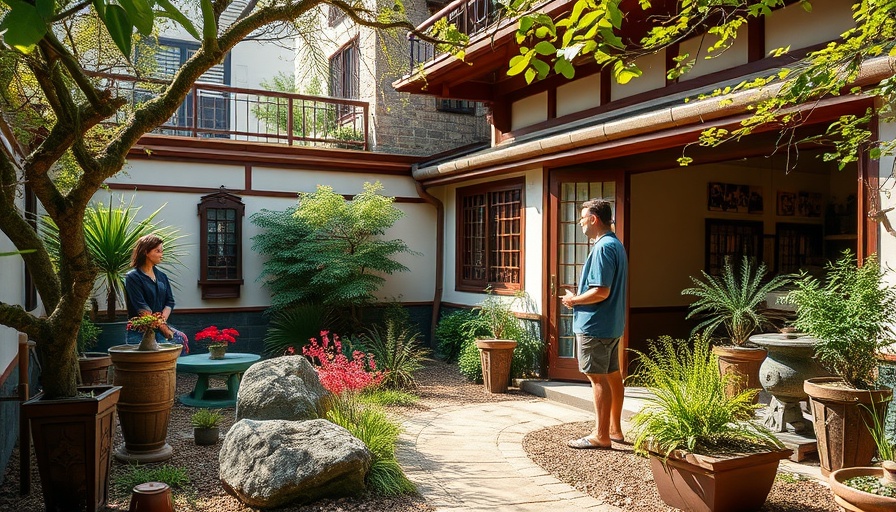
Discovering the Serenity of Japanese Zen Gardens
In a world buzzing with activity, the idea of creating a tranquil oasis right in your backyard can feel like a dream. As discussed in the video Transforming Backyard Into Japanese Zen Garden, having a peaceful, beautiful space for relaxation isn’t just a luxury—it’s a necessity. The Zen garden, with its intricate balance of elements such as stone, water, and lush plant life, provides an ideal escape from the fast-paced daily grind.
In Transforming Backyard Into Japanese Zen Garden, the discussion dives into the essential elements of creating a peaceful garden, exploring key insights that sparked deeper analysis on our end.
Why Choose a Japanese Zen Garden?
Japanese Zen gardens are known for their calming aesthetics. They symbolize simplicity, tranquility, and harmony with nature. Incorporating elements like stepping stones, gravel, and strategic plant placement brings a touch of peace into any home, especially in the heart of bustling communities like Metro Vancouver.
Practical Steps to Transform Your Backyard
Creating your own Zen garden doesn't require professional help. The video showcases several DIY techniques that anyone can follow, regardless of skill level. To begin, identify a space in your backyard—perhaps a corner that often feels neglected. Use treated pine sleepers for decking that won't rot, and create a framework that adds structure to your design. This decking can serve as a perfect spot to meditate or enjoy tea with friends, a vital element echoed throughout the Japanese garden philosophy.
Choosing the Right Plants
Plant selection is crucial. The video emphasizes using plants like the Japanese maple for its stunning colors and the slimline camellia, ideal for tight spaces without sacrificing beauty. Residents of Metro Vancouver will appreciate that many of these plants are well-suited to our climate, ensuring your garden remains vibrant year-round.
Incorporating Water Features
A water feature is a staple in any Japanese Zen garden. As demonstrated in the video, a simple flowing water element not only enhances the aesthetic appeal; the soothing sound of water can significantly enhance your relaxation experience. Consider installing a water bowl or a small fountain—these additions invite a sensory connection with nature.
Creating inviting pathways
To enhance the flow and energy of your Zen garden, consider the layout of your pathways. Use stepping stones interspersed with carefully placed gravel, allowing the tranquility of your space to be experienced fully. This design approach captures the essence of Japanese gardens, ensuring a seamless transition from one element to the next and inviting you to explore.
Maintaining Your Japanese Zen Garden
One of the most appealing aspects of a Zen garden is its low-maintenance nature. By selecting hardy plants and incorporating gravel instead of traditional grass, you'll spend less time mowing and more time enjoying your innovative green space. This aspect is critical for Metro Vancouver residents, where maintaining a garden can often feel like a substantial commitment.
A Peaceful Escape Awaits
Ultimately, designing a Japanese Zen garden in your backyard is about creating a personal sanctuary, a place to unwind and reconnect. Each rock, plant, and pathway combines to form a landscape that embodies peace—a precious escape in our urban lives.
As you explore the possibilities for your Zen garden, consider both the benefits of incorporating natural elements and the sense of serenity they bring. It’s your chance to turn an ordinary space into a haven of tranquility.
Start planning your Zen garden today and transform your outdoor space into a peaceful retreat that supports your mental well-being and connects you closer to nature.
 Add Row
Add Row  Add
Add 




Write A Comment